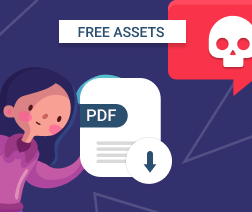When it comes to starting a managed services provider (MSP) business, you can build it as a team or do it alone. While there are many benefits to collaborating with others, sometimes the “lone-wolf” approach can have immense benefits. But before going out on your own and becoming a one-person MSP, you should properly weigh the pros and cons of the decision.
There is no better time to start an MSP business, as the market has been exploding in recent years. The global managed services market was valued at $152 billion in 2020 and is expected to reach $274 billion by 2026. That represents a significant opportunity for any business owner in that space.
There are many reasons to forge ahead as a one-person MSP. For one, you can keep a larger piece of the pie for yourself, as you’re able to limit your operating expenses significantly, especially in the beginning. You will only pay your own salary, eliminating the high cost of talent management. Another reason a single-employee company can be a good idea is as a way to explore the market and the best way to get your feet wet before ultimately expanding into much larger operations.
Further reading 5 Steps to One-Person MSP Success
But there are many hurdles that come with being a smaller shop. Most notably, potential customers may be skeptical that a single person can have the technical capabilities or time to manage their needs. Single-person MSPs may also have a harder time getting the word out on their own about their technologies and services offerings. Before beginning their entrepreneurial journeys, potential MSP business owners should be aware of these obstacles, as well as the steps they can take to mitigate them.
For instance, a single-person MSP can address many sales objections by ensuring they have the right training and technology solutions, such as a remote monitoring and management (RMM) or professional services automation (PSA) tool to support customers while guaranteeing consistent, high-quality services capabilities. It also helps to have a strong tech stack, a competitive price point, and consistent, reliable services.
New one-person MSPs can reach customers through several channels, many of which might be ambiguous for a first-time business owner. Newly established MSPs can begin knocking on doors and reaching out to businesses that fit their target customer profiles. Additionally, they can choose to invest in targeted marketing and advertising. While lead generation can often be the hardest part of starting out, landing a few customers early on can yield great references or case studies to help spread the word about your services.
Further reading MSP Marketing Plan for a One-Man Show
Finally, an MSP can consider tapping into their network of fellow MSPs. In some cases, a new business owner may get a contract or supplemental work, which could turn into a great source of monthly recurring revenue (MRR). This can be a way to help build initial clientele or gain valuable experience that will come handy in supporting new customers.
Getting any business off the ground is a difficult feat. But, given the growth in the need for MSP services as technology remains a primary business driver, the opportunity is there for any potential business owner who wants to seize it. Building a successful one-person shop is a great way to get started on this journey.




